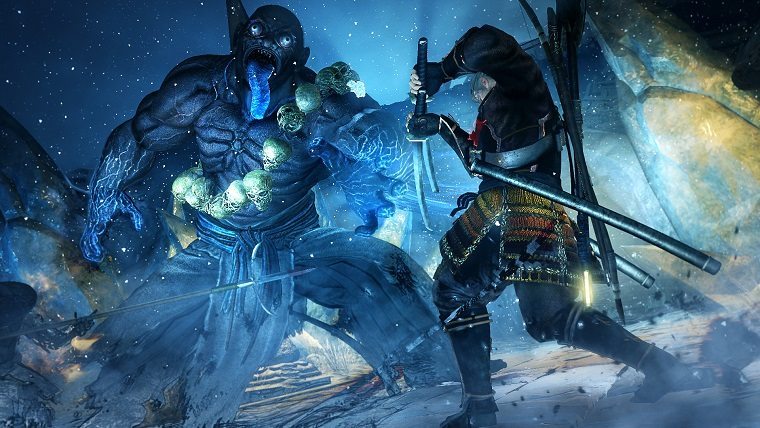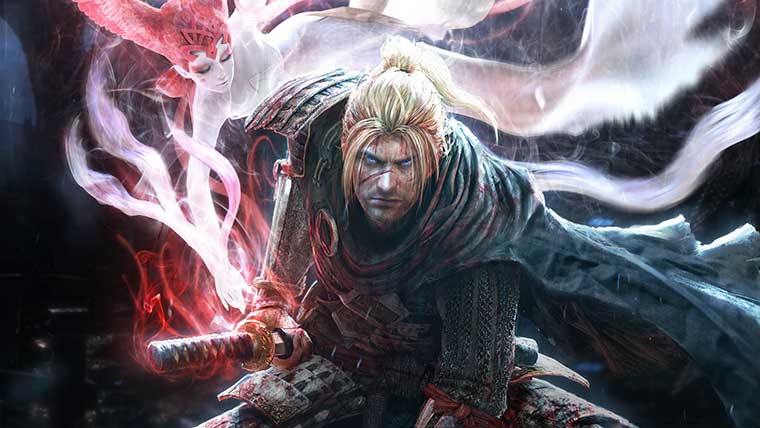The release of Team Ninja’s Nioh has been a highly-anticipated one among Dark Souls fans, as the game is poised to offer its own take on the brutal Action RPG genre that From Software kicked off several years ago. While the game was originally announced in 2004 before being re-announced in 2015 as a PlayStation 4 exclusive, everything that has happened since its re-reveal has been incredibly promising. A few demo periods helped the developers fine-tune the experience, and now here we finally are with the fantastic finished product.
The game starts you off waking up in a jail cell before being helped out by a strange creature, and then it quickly thrusts you straight into its challenging and unforgiving world. Anyone who has played any of the Dark Souls games will feel right at home with how the game plays, as you take on enemies at a slow and steady pace as you mix in dodging and defending with your attacks. The stamina gauge (called Ki here) is there to ensure that you don’t get trigger happy and forces you to plan your attacks methodically, and keeping an eye on your surroundings for ambushes and other potential sudden deaths is a must. Protagonist William can equip an assortment of weapons and armor to make his journeys more bearable, and he’ll collect souls (called Amrita) to improve his stats.
Dying from any of the game’s numerous hazards will drop your Amrita at the spot you died, giving you one chance to retrieve them before you lose them completely. However, here your Amrita will be protected by your Guardian Spirit, of which there are several in the game that you will be able to equip. Your Guardian Spirit provides you with passive benefits, but also allows you to pull off powerful Living Weapon attacks once the respective meter is full. You won’t be able to pull these moves off all the time, but they offer a great new way to get you out of a tough situation or deal some big damage on a boss.

While the core of this game is certainly Dark Souls, Team Ninja has taken it upon themselves to take those concepts further in many different ways that allow for even more options and strategy. For example, William has the ability to switch between 3 different combat stances on the fly, with each stance offering different attack powers and speeds that are suited to particular types of enemies. The high stance will give you higher attack power at the cost of speed, with the lower stance giving you more speed at the cost of power. The middle stance is the best of both worlds, but all 3 have their place in the game and offer welcomed depth to the formula.
Altering combat stances on the fly adds great depth to battles
Tinkering with the stances alone offers plenty of strategy to the game, as the game’s numerous enemies all have strengths and weaknesses that you’ll need to study and learn to eventually figure out the best ways to take them down. The fact that the game allows you to switch between these stances on the fly also allows for some mid-battle corrections on your part, ditching one stance that isn’t working to see if one of the others does any better. It seems simple on the surface, but its impact on the intricacies of the combat is substantial.
Nioh also shakes up the stamina gauge with the Ki gauge allowing you to pull off a move called Ki Pulse, which essentially allows you to quickly recover chunks of the Ki gauge with the right timing. Seeing as just about everything you do drains your Ki, being able to quickly recover some of it allows you to remain in the action longer and can often result in you pulling off just enough subsequent moves to finish off an enemy when you otherwise wouldn’t have. It’s also necessary to remove the Yokai Realm that enemies will regularly litter on the battlefield, as standing in these spots halts all Ki regeneration.

Nioh never gives you much time to breathe, ensuring that you need to constantly be thinking on your feet, or you’ll suffer yet another death. The game delivers levels or areas similarly to the Souls series. What can only be best described as labyrinths are home to countless viscous enemies and environmental hazards that all have the ability to kill you in the blink of an eye. There will be pressure plates that trigger lethal traps, high structures that you’ll plunge to your doom from, (if you’re not careful) and plenty of enemies hiding just out of site to get the jump on you.
You’ll progress through these levels much as you would in the Souls series, looking for Shrines (bonfires) in order to save and use your Amrita to level up along the way. Of course, going to these shrines resets all of the area’s enemies, so they do have their negatives. However, coming across one never fails to be a massive relief, as you finally complete a particular punishing area and have the ability to continue from the place of the Shrine rather than the beginning of the dungeon. The game also offers many shortcuts (some obvious and others not), allowing you to avoid trekking through the entire dungeon in order to get to the next area or boss fight.
Speaking of boss fights, Nioh is no slouch when it comes to offering boss encounters that take everything you have in order to come out the other side victorious. The bosses also don’t lack in variety, with everything from monstrous ogres and giant centipedes to human (or human-like) characters that all require a lot of patience to finally overcome. Trial and error is the name of the game when it comes to the boss encounters, as you slowly learn boss attack patterns and openings to figure out when the best times are to attack and which stances or weapons work best. These encounters are always riveting, as even making one mistake can often result in your sudden demise. The boss battles (or even regular battles) never feel cheap or unfair, however, they do force you to bring your A-game every single time.

While most of what has been described so far sounds an awful lot like the Souls series, Team Ninja took a different approach when it comes to the actual narrative. Nioh is by no means a narrative-heavy game, but you most certainly won’t need to scour its nooks and crannies to be able to figure out what the story is. The story here won’t win any awards, but it does its job in creating a fantastic setting and atmosphere for the actual gameplay. There are several cinematic cutscenes where William meets and interacts with different characters, and these characters can even occasionally accompany you in missions. While you can summon other players to help you out, having an NPC along for the ride is a nice change of pace and takes a little of the heat off of you. These characters can’t be killed, but they’ll eventually be knocked down and you’ll have to help them up to get them back in the fight.
Nioh will make you reconsider what a challenging game really is
Nioh’s world also isn’t seamless as it is in many Souls games, with the game instead giving you a world map that breaks each area down into more digestible levels. These levels vary in length, but they will also sometimes have side quests that have you coming back to them with different objectives and enemies. While side missions are usually similar in difficulty to the main missions, it is the addition of the Twilight missions where Nioh really shows you who’s boss. These missions will show up occasionally and offer ultra-challenging levels in areas you’ve been to previously, and they make the game’s already challenging main missions look like a cakewalk. These are an excellent addition to the game’s repertoire, as they offer a considerable challenge even after you’ve bulked your character up throughout the course of the game.
The Verdict
Team Ninja has stumbled in recent years, but the release of Nioh marks an impressive return to form for the studio. They took their time to ensure that the game was as good as it could possibly be, and that time wasn’t wasted. The finished product is a fantastic action RPG that may borrow a lot from the Souls series, but nevertheless adds plenty of great twists to the formula to allow it to stand proudly on its own.








Published: Feb 2, 2017 02:01 am